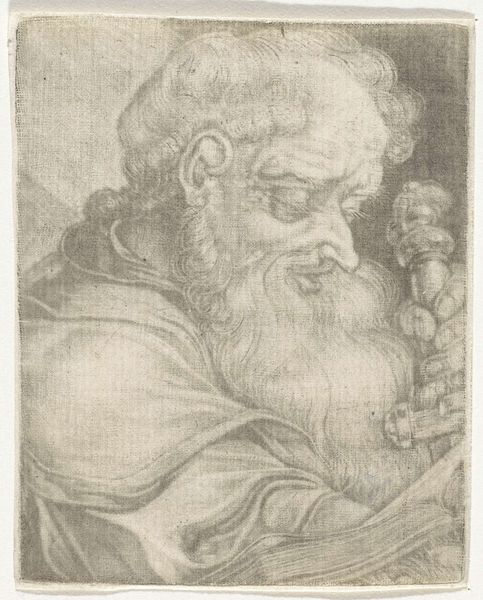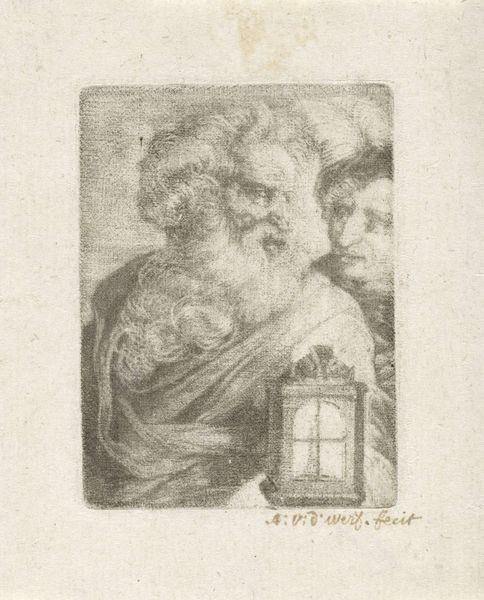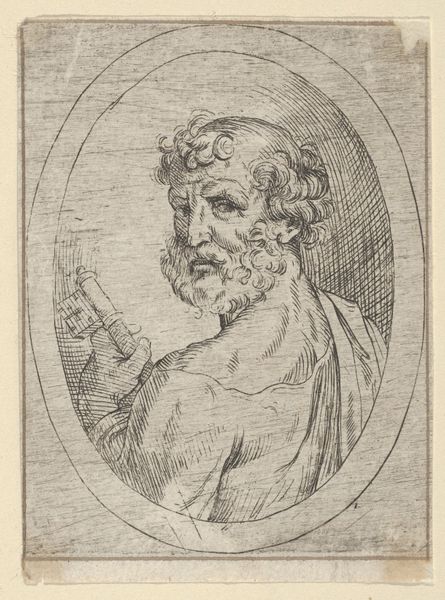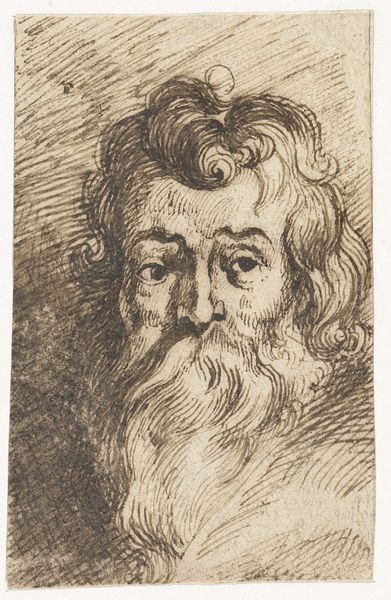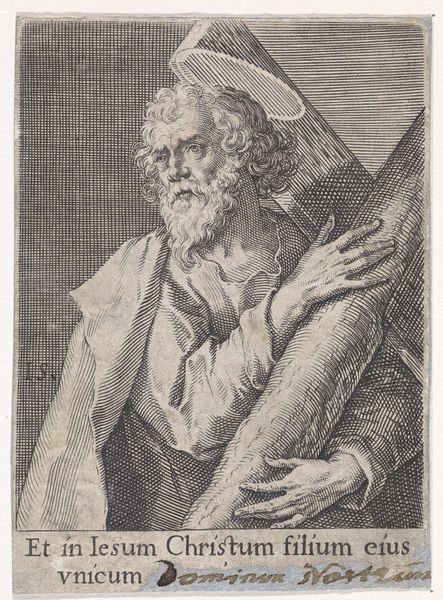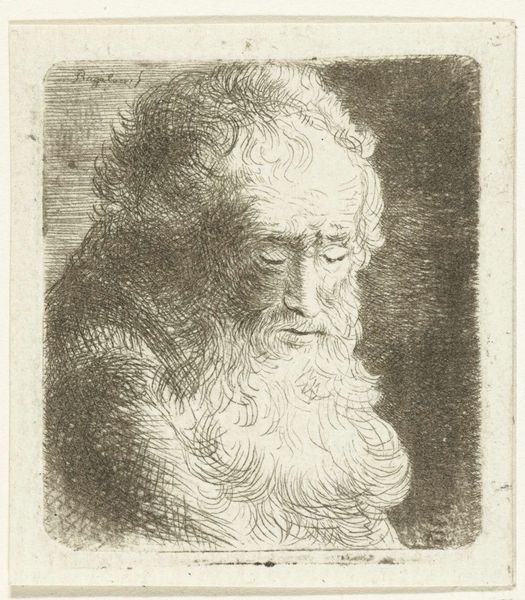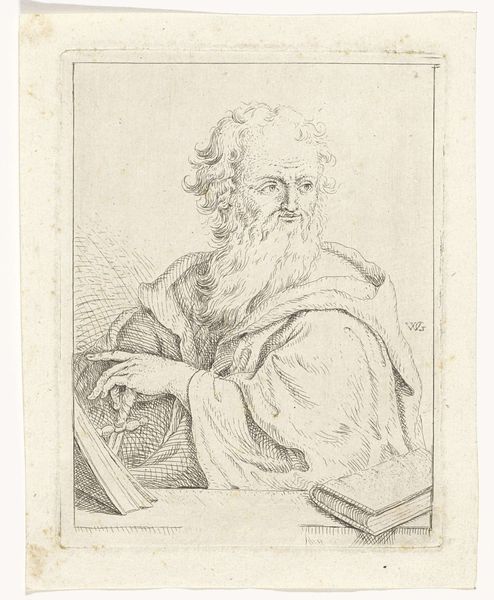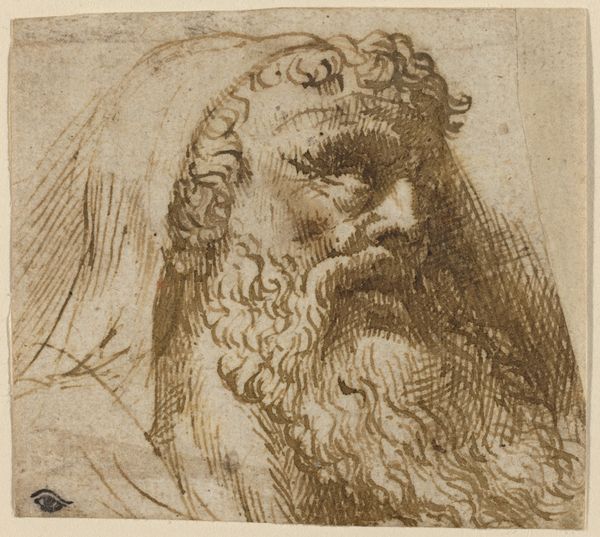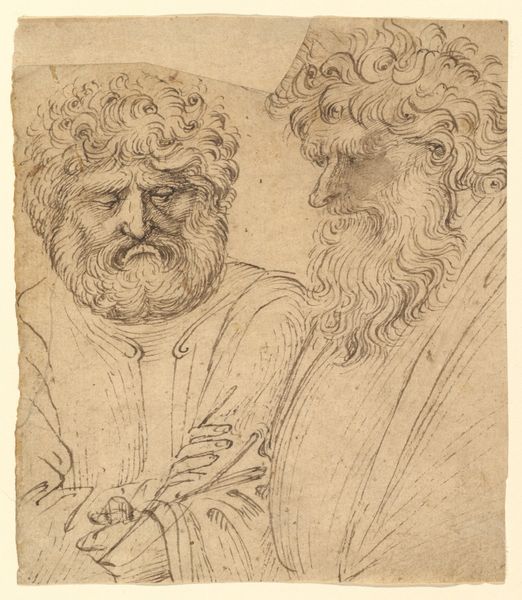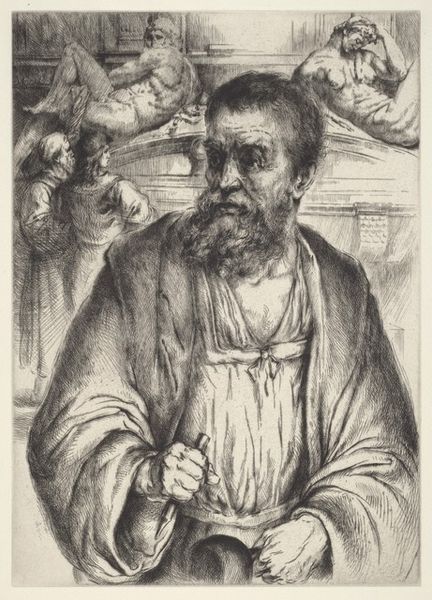
drawing, pencil, charcoal
#
portrait
#
pencil drawn
#
drawing
#
baroque
#
pencil sketch
#
charcoal drawing
#
pencil drawing
#
pencil
#
genre-painting
#
charcoal
Dimensions: height 71 mm, width 52 mm
Copyright: Rijks Museum: Open Domain
Curator: Here we have "Diogenes met de lantaarn," or "Diogenes with the Lantern," a drawing attributed to Adriaen van der Werff, likely created between 1669 and 1722. Editor: The texture immediately grabs me. It’s all pencil and charcoal, isn't it? Very raw, especially around the head of Diogenes – it’s like the thought process is laid bare. Curator: Exactly. The use of pencil and charcoal provides an interesting lens through which to view Diogenes. In van der Werff's time, Diogenes represented a philosophical challenge to societal norms and institutions. It makes me think about who would commission such a work, and what its display signified. Editor: I’m also stuck on this lantern; its materiality within the context. Lanterns weren't just about providing light, they signified something, right? The means of seeing in the darkness. Curator: Absolutely. The lantern underscores Diogenes' famous quest to find an honest man. It becomes a powerful commentary on truth, and perhaps a critique of the social order during van der Werff’s time, considering his aristocratic patronage. This was an era marked by rigid social hierarchies and van der Werff, despite being of humble origins, thrived within this world. Editor: The choice of such accessible materials is interesting given that patronage. Pencil and charcoal feel democratic, immediate. It presents a curious tension. Was it meant to challenge, or merely reflect, existing power structures? Curator: That is the compelling tension. The artwork becomes a battleground where elite tastes intersect with philosophical and, potentially, political undertones. The story of Diogenes was certainly widely known through publications accessible at the time. Editor: I find myself wondering about the actual production of these pigments; the sourcing, trade, and labor that put them in the artist's hands. How does that material process shape what Diogenes symbolizes? Curator: That connection to materiality grounds the intellectual and philosophical ideals within a broader context. It reframes how we interpret van der Werff's decisions. I see this piece differently now! Editor: Me too. It's a reminder that even classical figures are always seen through the lens of the world they're made in.
Comments
No comments
Be the first to comment and join the conversation on the ultimate creative platform.
